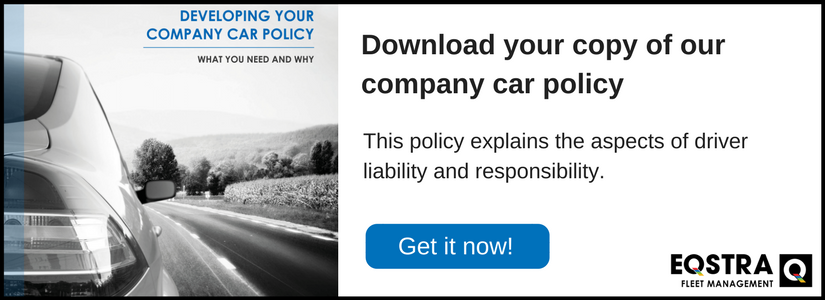
Fleet managers who neglect driver training and performance reviews are probably losing a large portion of their fleet budget to unnecessary mistakes and costs.
It’s important that fleet managers and drivers alike see performance reviews as part of the training and career growth process, and not just as an opportunity to point out faults and be threatened with dismissals. For training and reviews to be successful, fleet managers need to create an environment where drivers understand that training is part of furthering their own careers and that reviews are a part of determining how the company can help them improve. Once you create an environment where drivers are keen to keep improving, you’ve already won half the battle and everyone benefits. Here's how to operate a successful fleet with accurate driver training and reviews:
It’s all in the details
Drivers who are detail-oriented tend to be more efficient and safety conscious. When it comes to training, fleet managers must ensure that their drivers understand the reasons why the details are so crucial. Give them examples of case studies or scenarios where poor safety checks resulted in injuries or where poor maintenance ended up costing a fortune in the end. As with any other job, if employees know why certain things are expected of them they’ll be more tuned-in to the quality of their work.
Logbooks are the best example of how details can affect the success of an entire fleet. During driver reviews, it’s important to go over their handling of logbooks. If your company still requires manual logbook entries, fleet managers need to review these with drivers on a regular basis. This way you can make sure all drivers know how to manage their logbooks and you can point out errors immediately. Make sure you explain the effect that such errors can have on the fleet as well as the driver’s performance. For example, incorrectly filling in fuel information can lead to huge inefficiencies being spotted too late, but can also create the false impression that a specific driver is driving inefficiently. By not filling in the correct details, drivers can inadvertently make themselves look like poor drivers. It’s important for employees to understand that attention to detail benefits them as well as the company.
Vehicle checks are another key detail that good drivers should never neglect. During training, it’s vital that drivers are taught how important these checks are not just for their own safety but for the company’s bottom line as well. Fleet managers need to ensure that drivers have a clear checklist and that they know how to correctly inspect every item on the list. When it comes to reviews, fleet managers cannot penalise drivers who have not been properly trained in the correct vehicle checks. It is up to the fleet manager to ensure the drivers know what to check, why they’re checking it, and to ensure these checks are never brushed off if drivers are in a rush.
According to EQSTRA Fleet Management,
“Fleet managers should always ensure that their drivers are operating in a safe environment. Therefore they always need to protect their drivers by availing appropriate safety training and making them aware of company policies which cater for it. Statistically in South Africa, 10000 people are killed on the road annually (Dube, 2015) which prove the importance of driver safety training as it has an enormous impact on customers operational cost translated in vehicle downtime, customer deliveries etc.”
Value your drivers
We all know from experience that if we feel valued by a company, we tend to perform better. During driver training, it is important to place a lot of emphasis on how valuable good drivers are to the company. There has long been a tendency to overlook the importance of drivers in the fleet industry, but experienced fleet managers know that a brilliant driver is more valuable to the company than any other aspect of the fleet. During performance reviews, it’s important to remind your drivers of this fact and point out that any criticism is given in order to help them become indispensable as a driver.
“This may sound like ‘soft’ training and many managers may be tempted to simply sign their drivers up for a refresher course”, says Willie Venter, former Fleet Consulting Manager at EQSTRA Fleet Management, “but no amount of training will help if a driver isn’t inspired to improve. Fleet managers should speak to their peers in the industry and find out what types of incentives they’re implementing. Drivers who are inspired and incentivised to constantly improve their performance are industry gold.”
Technology
No matter the size of your fleet, reliable fleet monitoring technology is the best tool available to ensure you are adequately training your drivers and conducting relevant performance reviews. Fleet monitoring technology allows you to monitor driver behaviour and keep a record of speeding, route deviations, exceeding driving hours, irregular fuel fill-ups, over-revving, extended idling, and numerous other factors that determine the efficiency of your fleet and drivers.
Automated reports give fleet managers a blueprint of how each driver is performing and in which areas they may require additional training. According to Willie,
“share these reports with the driver during performance reviews. It’s possible they didn’t realise what they were doing wrong, or they don’t realise it has such an impact on the fleet. Such reports can be a vital learning tool for drivers.”
At the end of the day, whether you track driver performance manually or via an automated system, the most important part is that everyone understands the data. The best drivers are the ones who understand how and why everything they do affects the company as well as their future careers. Good training and detailed performance reviews equip drivers with the knowledge to keep honing their skills. If you’re achieving this through your training and review methods, you’re getting it right.
